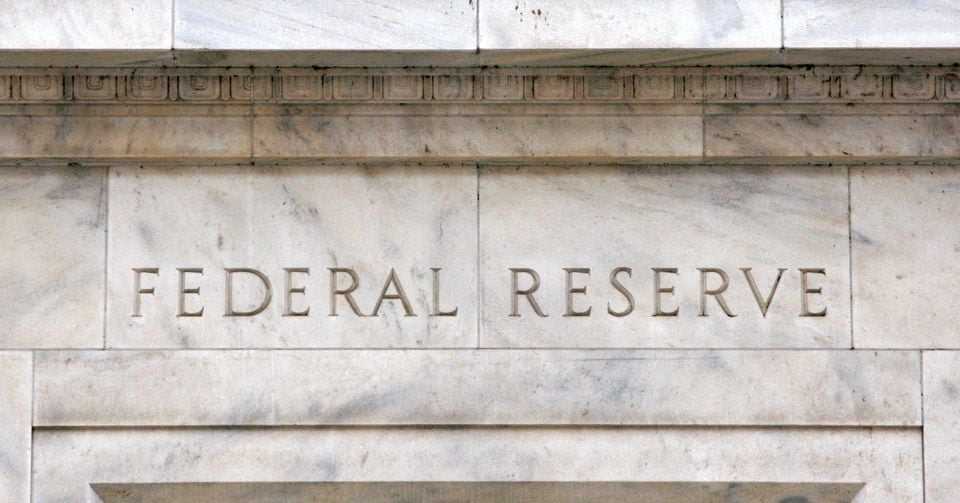
Introducing a Revolutionary Plan to Ensure Financial Stability
The Federal Reserve is taking a bold step towards safeguarding the banking industry and protecting the interests of consumers. With the rise in popularity of cryptocurrencies, the risks associated with these digital assets have become increasingly concerning.
Realizing the potential threats that cryptocurrencies pose, the Federal Reserve has launched an ambitious initiative to remove them from the banking industry altogether. This groundbreaking plan aims to protect the integrity and stability of the financial system, ensuring the well-being of individuals and businesses alike.
As part of this initiative, the Federal Reserve will implement comprehensive measures to identify and regulate the use of cryptocurrencies. By closely monitoring and scrutinizing all transactions involving digital currencies, the Federal Reserve will prevent them from infiltrating the traditional banking sector.
The Benefits of a Cryptocurrency-Free Banking Industry
By removing cryptocurrencies from the banking industry, the Federal Reserve aims to eliminate the risks associated with these decentralized and unregulated assets. This will provide individuals and businesses with enhanced financial security, ensuring trustworthy and reliable transactions.
Additionally, a cryptocurrency-free banking industry will foster trust and confidence among consumers. With a regulated financial system, consumers can have peace of mind knowing that their assets are protected and that fraudulent activities are minimized.
Join us in this Revolutionary Movement
The Federal Reserve invites individuals and businesses to support and embrace this groundbreaking initiative. By joining forces, we can eradicate the risks and uncertainties surrounding cryptocurrencies, creating a robust and stable banking industry for all.
Federal Reserve Initiative

The Federal Reserve has recently launched an ambitious initiative aimed at removing cryptocurrencies from the banking industry. This initiative comes as a response to the growing popularity of cryptocurrencies such as Bitcoin and Ethereum.
With this initiative, the Federal Reserve aims to protect the stability and security of the traditional banking system by discouraging the use of cryptocurrencies. The Federal Reserve believes that cryptocurrencies pose significant risks to the financial system, including money laundering, fraud, and instability.
To achieve this goal, the Federal Reserve plans to work closely with banking institutions to develop and implement strict regulations on cryptocurrencies. These regulations will include enhanced customer due diligence requirements, increased reporting obligations, and enhanced AML and KYC standards.
Furthermore, the Federal Reserve will collaborate with other regulatory agencies and government bodies to ensure a coordinated approach in removing cryptocurrencies from the banking industry. This will involve sharing information, exchanging best practices, and harmonizing regulatory frameworks.
While the initiative is ambitious, the Federal Reserve acknowledges the need for innovation and recognizes the potential benefits of blockchain technology. To this end, the Federal Reserve will continue to support research and development in blockchain technology and explore its potential applications in the banking industry.
In conclusion, the Federal Reserve’s initiative to remove cryptocurrencies from the banking industry is driven by its commitment to safeguarding the stability and security of the traditional financial system. Through strict regulations, collaboration with regulatory agencies, and continued support for blockchain technology, the Federal Reserve aims to mitigate the risks associated with cryptocurrencies and ensure the resilience of the banking industry.
Implications of Cryptocurrencies in Banking

In recent years, the rise of cryptocurrencies has presented both opportunities and challenges for the banking industry. While these digital currencies have the potential to revolutionize financial transactions, they also pose risks that must be carefully managed.
One of the key implications of cryptocurrencies in banking is the potential for increased efficiency and cost savings. With traditional banking systems, transactions can be slow and expensive, especially for cross-border payments. Cryptocurrencies, on the other hand, offer the possibility of near-instantaneous transactions at a fraction of the cost. This could greatly benefit consumers, businesses, and financial institutions, reducing friction and streamlining the payment process.
However, the decentralized nature of cryptocurrencies also introduces unique risks. Unlike traditional fiat currencies, which are regulated by central banks, cryptocurrencies are not backed by any government or financial institution. This lack of regulation and oversight opens the door to potential fraud, money laundering, and other illegal activities. Banks will need to develop robust security measures and compliance procedures to mitigate these risks and ensure the integrity of their operations.
Another implication of cryptocurrencies in banking is the potential disruption of traditional business models. As cryptocurrencies gain popularity and widespread adoption, they could challenge the role of banks as intermediaries in financial transactions. Peer-to-peer cryptocurrency transactions eliminate the need for third-party intermediaries, such as banks, which could potentially reduce the demand for traditional banking services. Banks will need to adapt to this changing landscape by exploring new business models and leveraging blockchain technology to stay competitive.
Additionally, the rise of cryptocurrencies raises questions about the role of central banks and monetary policy. As cryptocurrencies become more prevalent, central banks may face challenges in maintaining control over monetary policy and regulating the economy. The decentralized nature of cryptocurrencies makes it difficult for central banks to influence the value and supply of digital currencies. This could have far-reaching implications for the stability and effectiveness of monetary policy.
In conclusion, the emergence of cryptocurrencies in the banking industry presents both opportunities and challenges. While these digital currencies have the potential to revolutionize financial transactions and increase efficiency, they also introduce risks that must be carefully managed. Banks will need to adapt to the changing landscape by developing robust security measures, exploring new business models, and carefully considering the implications for monetary policy.
Federal Reserve’s Action Plan

The Federal Reserve has developed an ambitious action plan to address the increasing presence of cryptocurrencies in the banking industry. The plan focuses on several key areas to ensure a smooth transition and to safeguard the stability of the financial system.
| Area | Objective |
|---|---|
| Regulatory Framework | Develop comprehensive regulations to govern the use of cryptocurrencies in the banking industry, ensuring transparency, accountability, and consumer protection. |
| Education and Awareness | Educate the public and financial institutions about the risks and benefits of cryptocurrencies, promoting responsible use and preventing fraud. |
| Collaboration | Collaborate with other regulatory bodies, financial institutions, and industry experts to exchange information and best practices, fostering a cooperative approach to address challenges and share knowledge. |
| Innovation | Encourage and support innovation in the banking industry by leveraging emerging technologies to offer secure and efficient alternatives to cryptocurrencies. |
| Monitoring and Enforcement | Establish a robust monitoring and enforcement framework to detect and prevent illegal activities related to cryptocurrencies, including money laundering and terrorist financing. |
| International Cooperation | Engage in international dialogue and collaboration to develop global standards and frameworks for the regulation of cryptocurrencies, ensuring a consistent approach across borders. |
The Federal Reserve believes that by implementing this action plan, it can effectively remove cryptocurrencies from the banking industry while maintaining the integrity and stability of the financial system. By providing clear regulations, education, and collaboration, the Federal Reserve aims to foster innovation and ensure the trust and confidence of consumers and financial institutions.
Challenges and Opportunities

While the Federal Reserve’s initiative to remove cryptocurrencies from the banking industry is ambitious, it also presents certain challenges and opportunities. Here, we explore some of the key factors that need to be taken into consideration:
Regulation and Legal Framework

One of the main challenges in removing cryptocurrencies from the banking industry is the regulatory and legal framework. Cryptocurrencies operate on a decentralized network, making it difficult to enforce traditional financial regulations. Developing effective regulations and laws that govern cryptocurrencies and their use in the banking industry will require close collaboration between financial institutions, governments, and regulatory bodies.
Adoption and User Experience

Another challenge lies in the adoption and user experience. Cryptocurrencies have gained popularity among certain groups, but they still have a long way to go before they become widely accepted and easy to use for the general public. Innovations in user-friendly interfaces and secure platforms need to be developed to make cryptocurrencies more accessible and convenient for everyday transactions.
| Challenges | Opportunities |
|---|---|
| Regulatory and legal framework | Creation of new policies and regulations that can ensure the integration of cryptocurrencies in the banking industry while safeguarding against potential risks. |
| Adoption and user experience | Development of user-friendly interfaces and secure platforms that can enhance the accessibility and convenience of cryptocurrencies for everyday transactions. |
| Security and fraud prevention | Innovation in blockchain technology and security measures to protect against hacking and fraudulent activities. |
| Public awareness and education | Increased efforts in educating the public about cryptocurrencies, their benefits, and the potential risks involved. |
Overall, the ambitious initiative taken by the Federal Reserve to remove cryptocurrencies from the banking industry poses both significant challenges and exciting opportunities. With careful planning, collaboration, and technological advancements, it is possible to create a more regulated and efficient financial system.
Why does the Federal Reserve want to remove cryptocurrencies from the banking industry?
The Federal Reserve wants to remove cryptocurrencies from the banking industry because they see them as a potential threat to the stability of the traditional financial system. Cryptocurrencies are often seen as a decentralized alternative to traditional banking and can be used for illicit activities such as money laundering and financing terrorism.
What is the initiative launched by the Federal Reserve?
The initiative launched by the Federal Reserve aims to remove cryptocurrencies from the banking industry. It involves introducing stricter regulations and oversight on financial institutions in order to limit their involvement with cryptocurrencies. The Federal Reserve hopes that by doing so, they can reduce the risks associated with cryptocurrencies and maintain the stability of the traditional banking system.







